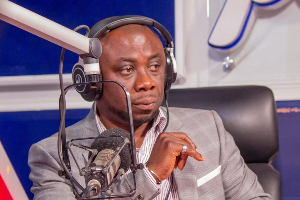 |
| Yaw Ofori's Singing band were one of the highlife pioneers |
Its influence spread to other African countries such as Sierra Leone, the Congo and Nigeria.
In the 1970s, highlife was hugely influential in the work of Ghanaian Afro-rock band Osibisa and the Nigerian Afro-beat star Fela Anikulapo-Kuti.
There were three main forms of early Ghanaian highlife - Adaha, Fanti Osibisaaba and palm wine music.
The first known form could be seen in the local Adaha brass-band music played in the 1880s on the Fanti coast, located in the south of modern Ghana.
This was the legacy left by the regimental bands of 6,000 West Indian soldiers, who had been stationed at the Cape Coast and Elmina Castles by the British colonial administration.
The early years
Adaha music spread like wildfire throughout southern Ghana.
In the small towns and villages that could not afford expensive brass instruments, a poor man's drum-and-voice version called konkoma (or konkomba) developed in the 1930s and spread as far as Nigeria.
The second form of highlife was Fanti Osibisaaba music in which local percussion instruments were accompanied by the guitars and the accordions of sailors, particularly the Kru seamen of Liberia.
They, in the early 20th century, pioneered Africanised cross-fingering guitar techniques.
This technique became key not only to the development of Ghanaian highlife, but also to the Maringa of Sierra Leone, the Juju music of western Nigeria and "dry" guitar music of Central Africa.
 |
| Palm wine music is regarded as the roots of modern day highlife |
This combination created a more rootsy style of highlife called "odonson", Akan "blues" or "palm-wine music".
Between the 1920s and 1940s, many records of the early guitar highlife styles of Jacob Sam, Kwame Asare, Mireku and Appiah Adjekum were released by western record companies such as Zonophone, Columbia, Odeon and HMV, which were based in Ghana.
Living the highlife
It was in the early 1950s that theatre groups, which travelled around the country and with their "concert party" shows, started to use highlife guitar bands as part of their act.
One of the people to pioneer this was E.K Nyame, whose records became popular in eastern Nigeria.
The third type of highlife evolved when poor people laid claim to the music formerly played only by the cream of society, by large ballroom and ragtime dance orchestras, such as the Excelsior Orchestra and Jazz Kings of Accra, formed in 1914.
 |
| ET Mensah and the Tempos band are still popular today |
One of the first highlife orchestras was the Cape Coast Sugar Babies, who will be remembered for its sensational tour of Nigeria in 1937.
During the Second World War, swing was introduced by British and American servicemen based in Ghana. As a result, the large dance orchestras gave way to the smaller highlife dance-bands.
The most famous was the Tempos band, led by the Ga trumpeter ET Mensah, and which incorporated Afro-Cuban percussion played by the band's drummer Guy Warren, now known as Kofi Ghanaba.
It was the Tempos' brilliant fusion style that made such an impact on Nigeria in 1950 and encouraged the likes of Bobby Benson, Victor Olaiya and Rex Lawson to form their own Yoruba and Ibo highlife dance bands.
During the 1970s when Ghana's economy declined, eastern Nigeria became an important and lucrative destination for highlife musicians.
 |
| ET Mensah (l)and Victor Olaiya (r) often played together |
Although the three types of "traditional" highlife have waned in Ghana over the last 20 years, new types of highlife have appeared.
The "gospel highlife" of the local churches, "techno" forms of the music like "burgher highlife" created by Ghanaians living in Germany and, more recently, vernacular rap "hip-life", a combination of hip hop and highlife.
Over the years, highlife has also influenced Ghanaian traditional music such as the Borborbor recreational music of the Ewe people and the Kpanlogo drumming and "cultural groups'' like the Wulomei of the Ga people of Accra.
















